Freight car weathering has been a recent topic on the Resin Freight Car Builders discussion list. Period boxcar roof weathering was also a recent discussion on the Real Steam Era Freight Car list. It seemed like a good time to pull photos from both discussions for a post.
Let’s face a simple fact. Freight cars in the steam era were mobile repositories of dirt, grime, dust, rust, and soot. There may also be damage caused by crews or laborers working on the cars. Modelers depend upon color period photographs to guide our weathering efforts. The Farm Security Administration/Office of War Information Color Photographs at the Library of Congress website is a trove of information from bygone days.
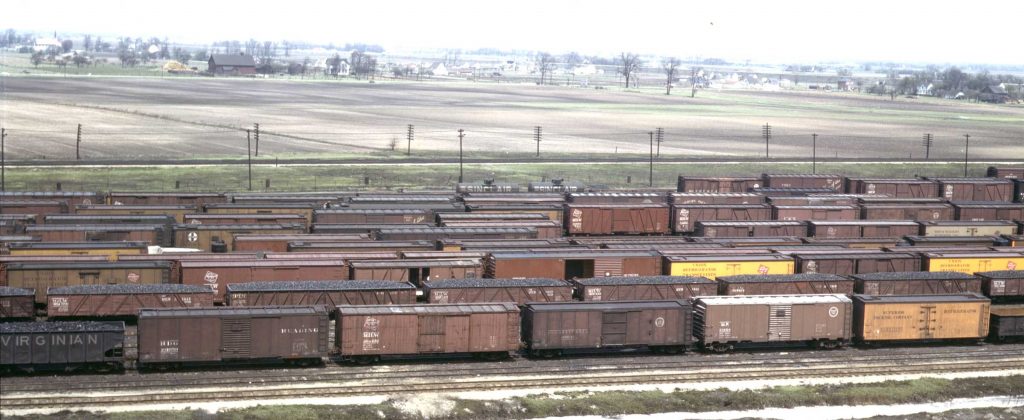
Jack Delano captured many rail images while employed by the Farm Security Administration. The above image has been edited and the lighting levels adjusted. You can download your own copy via the link in the caption. Always download the largest TIF file so you can zoom in on the details easiest.
The image captures a yard of war-weary freight cars. Many exhibit faded lettering, paint failure on portions of the roofs, and coatings of dust and soot. Even the newest freight cars show weathering elements. Click on any image here to review a larger size.
Clark Propst finished building and weathering a freight car and shared this photo. He started weathering by airbrushing a brown tinted Dullcote on the car. It darkens the color a bit and blends the lettering. Note how the lettering isn’t a bold white but slightly faded.
Soot is apparent along the upper reaches of the car side and on the roof. Dust has kicked up and holds along the lower edges of the car. Clark added scuff marks above the ladder rungs and chalk marks left by railroad crews. His model shows the layers of weathering left behind by nature and man.
Charlie Duckworth wrapped up a Virginian boxcar and shared his progress. Take a good close look at that car side. Charlie has carefully shaded individual boards so there isn’t an even tone of color. Paint doesn’t necessarily stick to all wood the same on the same car. We often see different rates of paint failure on a single car. He also applied dust along the side sill and on the trucks.
Michael Gross shared this stock car project using gouache for the faded appearance on the wood boards, while the steel truss elements are slightly darker. Paint weathers differently on wood and metal components. Michael has applied a generous amount of dust along the side sill and trucks.

As we stand and observe a model railroad, we often see the car roofs. This is frequently an area with the heaviest accumulation of weathering. The Jack Delano image above is one of my favorites and has guided many weathering projects. Notice the paint on the running boards. Some have been replaced. Several roofs show paint failures. Soot obscures the paint on many of the roofs. There are a few older cars with wood roofs.
On our models, we can use color and media to reflect wood running board repairs and replacements, along with other weathering layers. Charlie Duckworth did a great job on the roof of this Virginian boxcar using different shades of Vallejo grey and some car color. The roof seems more faded than the car sides and soot is deposited against the carlines and panel ribs.
Michael Gross did similar work using gouache on the AT&SF stock car running boards. He also employed gouache to duplicate paint failure on many roof panels. The soot application is light but also changes the roof shade compared to the rest of the car.
We have moved beyond the days of applying one grimy wash as weathering on our models. Using a combination of media and color can reflect the prototype freight car appearances. Practice on a few models using prototype photos as a guide. Work on older models that are less vital to your layout and learn how the materials work and affect the overall appearance. I can take more time to produce models like those on this post, but they are models that may be in service for years on your layout.
Here are additional Jack Delano color images from the Library of Congress website. Download the largest TIF file for your archive.
- RIP track area with gondola interiors
- More boxcars at the Galewood freight house
- Boxcar ends at the South Water Street freight house
- General view of the South Water Street freight terminal
Thank you Charlie Duckworth, Michael Gross, and Clark Propst for sharing your model images with our readers.
Questions and comments can be posted below. Please follow the instructions so your comment can be posted. All comments are reviewed and approved before they appear. To subscribe to this blog, add your email address to the function at the bottom of the right column on the main page. Share the blog link with other model railroaders.


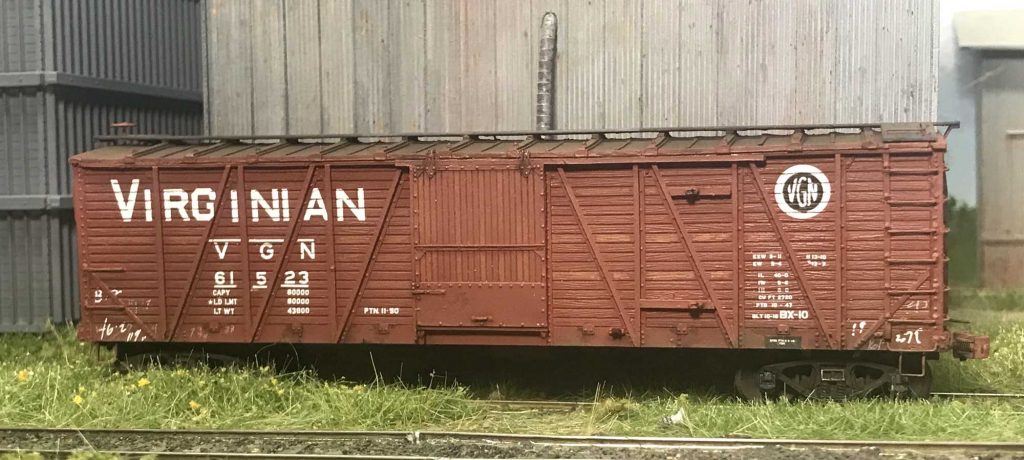
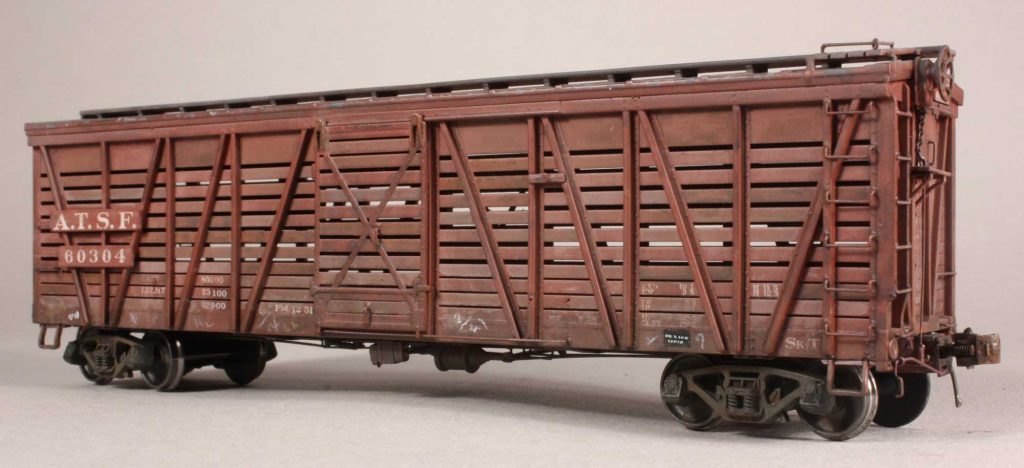
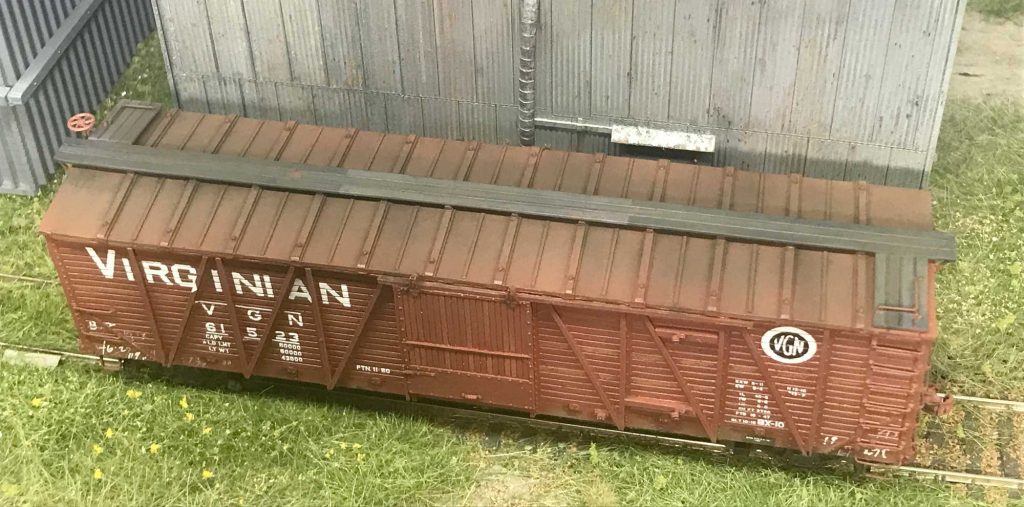
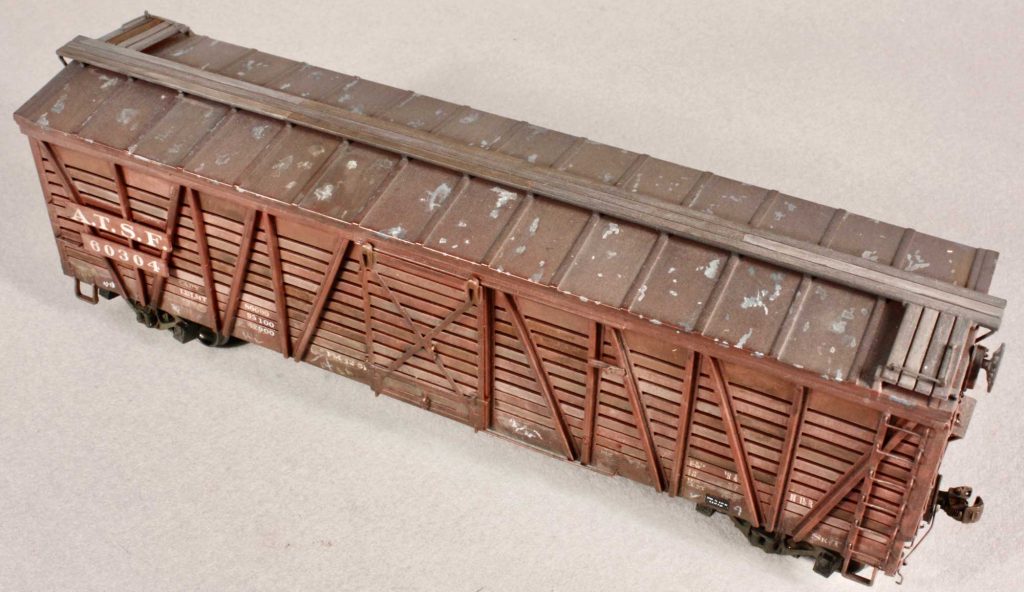
Here are links to clinics by Michael on using gouache:
http://old.atsfrr.org/resources/GrossMichael/Clinic%20Handout%202016.pdf
http://www.pcrnmra.org/pcr/clinics/EasyFreightCarWeathering1-2-3-Gross.pdf
The second clinic covers gouache and other techniques.
Thank you, Bob!